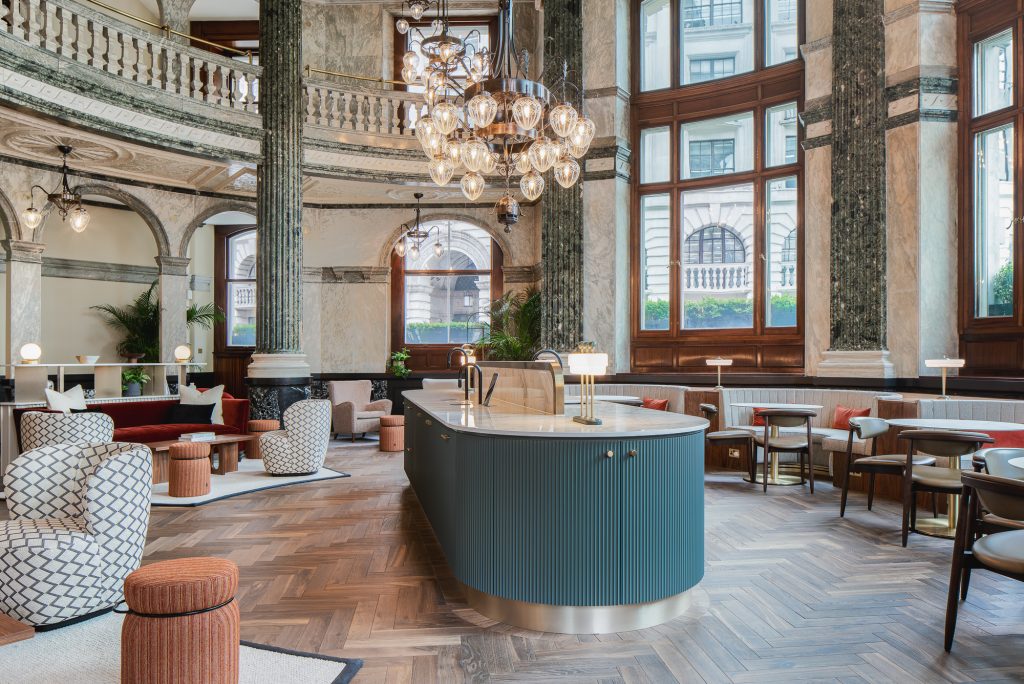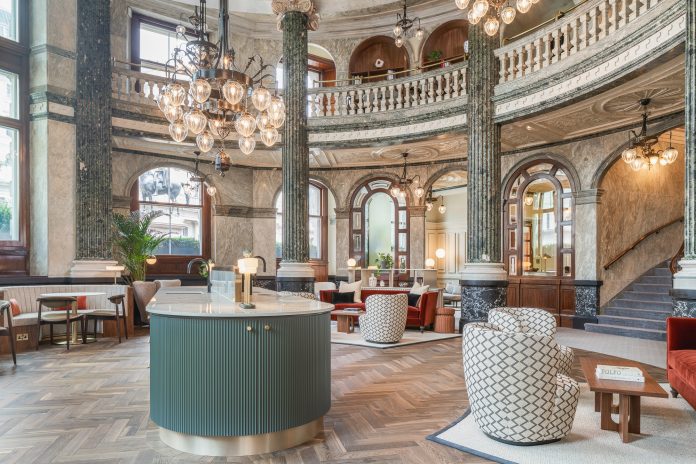Redefining the office experience through design, by Damion Burrows, Founder of DMBA, and Emily Smith, COO of Argyll.
In the wake of the pandemic, office design has been expected to quickly evolve and adapt to meet new demands of hybrid working. For Argyll, London’s exclusive office provider, there has been rising demand amongst clients for office spaces which mirror all the comforts of home coupled with high-end amenities – delivering luxury, comfort and functionality in equal measure.
Facing the challenge of enticing workers back to the office in a world of flexible schedules, office providers must work alongside architects and designers to embrace new design standards to offer a ‘home away from home’ and peel the workforce away from their WFH set-ups.
There were three key considerations at the heart of Argyll’s refurbishment of its portfolio of prime London heritage office buildings: honouring the history and legacy of each building; optimising energy efficiency and ESG credentials; and unifying the portfolio with signature Argyll touches.

Embracing historic heritage
Firstly, refurbishing listed buildings requires a delicate balance between celebrating their unique historic features and updating them to meet modern needs. Argyll’s building on Cornhill, located across from the Bank of England, is a representative example. The grandeur of the imposing marble columns in the lobby area required careful integration from a design perspective. To counterbalance the dominance of the columns, low seating with soft lighting was strategically placed around the rotunda, creating a sense of privacy and a calm, productive atmosphere akin to a high-end hotel lobby.
Carefully selected fabrics, colour palettes, and furnishings also helped to complement the existing structures by drawing on the colour palette of the Grade II listed building’s original grandeur: deep greens and blues to add a sense of depth, richness, and luxuriousness to the interior. Celebrating the building’s fluted period joinery also allowed the space to seamlessly connect new with old and presented a design motif consistent with other buildings in the portfolio.

A unified sensory experience
Creating a cohesive narrative across Argyll’s portfolio involved not only coherent colour palettes, panelling, and fabrics but also the implementation of a unique branding technique: Argyll No.3. Collaborating with celebrity perfumer Azzi Glasser, Argyll developed a signature scent that captures the Argyll experience and permeates Argyll office spaces, creating a sense of continuity. The rise of sensory design approaches has aligned with the blurring of lines between the demands of hospitality venues and the workplace – offering somewhere to connect with colleagues, socialise and collaborate. As the most impactful of all of the senses, the use of a scent offered an opportunity to enhance Argyll’s boutique, hotel-like feel and unify the portfolio.
Another way of bringing the home into office was creating coffee hubs that resembled kitchen islands. There is a calmly productive but social feel that accompanies these domestic spaces and recreating this in an office environment continues the trend of offices functioning as hospitality hubs with high-end amenities.

Design for a sustainable future
In addition to the transformation of workspaces into sites of comfort, luxury and collaboration, there has been a growing emphasis on sustainability in building design, as sustainability agendas continue to take precedence. Upgrading the Energy Performance Certificate (EPC) ratings of the listed buildings was central to the refurbishment programme and presented its own unique set of challenges. This was an opportunity to showcase the potential of retrofitting to bring historic and period buildings up to speed with the energy efficiency demands of the 21st century.
Conversely to the perception that older buildings hinder sustainability goals, they can in fact possess untapped potential. By implementing carefully considered interventions like updating heating and cooling systems and installing LED lighting, significant improvements can be achieved to maximise energy efficiency and achieve sustainability targets. For example, 84 Brook Street improved its EPC rating from ‘D’ to ‘B’ through a series of interventions undertaken in consultation with heritage and sustainability experts. Considering office buildings have emitted one-third of their lifetime CO2 emissions upon completion, upgrading and retrofitting existing structures to pave the way for a more sustainable future is essential.
Throughout Argyll’s refurbishment programme, a central focus has been striking a balance between high-end bespoke designs and the practical needs of the modern workplace. This approach reflects the evolving demands of today’s workforce, who seek sustainability, luxury, and comfort in their work environments. Traditional, purpose-built offices will not be enough to entice workers back to the office. By celebrating the heritage fabric of the buildings through careful retrofit, employing contemporary aesthetics and incorporating sensory design elements, a new office design standard is born.
www.dmba.co.uk | www.workargyll.com
Photography by Robin Quarrelle





